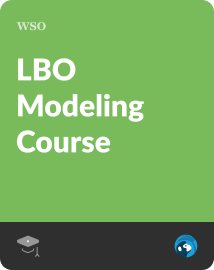Hong Kong Monetary Authority Investment Portfolio
One of the portfolios managed by the Hong Kong Monetary Authority's Exchange Fund (HKMA)
What Is the Hong Kong Monetary Authority Investment Portfolio?
The Hong Kong Monetary Authority Investment Portfolio is one of the portfolios managed by the Hong Kong Monetary Authority's Exchange Fund (HKMA).
In addition, Hong Kong's state-owned investment fund is in charge of monetary policy and maintains monetary stability. Furthermore, the exchange fund's finances, acting as a sovereign wealth fund, finance the activities of the investment portfolio.
The banking and investment portfolios are considered separate portfolios within the Exchange Fund managed by the Hong Kong Monetary Authority.
The Hong Kong Monetary Authority's investment portfolio comprises various assets, including cash, obligations, and accumulated surplus, denominated in Hong Kong dollars, foreign currencies, and gold or silver.
In this article, we will understand more about Hong Kong's monetary authority's investment portfolio, its responsibilities, portfolio segregation, portfolio composition, and its relation to the US dollar.
Key Takeaways
- The HKMA Investment Portfolio, managed by the HKMA's Exchange Fund, ensures monetary stability and supports financial policies in Hong Kong.
- It consists of two portfolios, investing in bonds and equities globally, with strategic and tactical asset allocations to achieve long-term returns.
- The Exchange Fund manages around $580.54 billion in assets, making it one of the world's largest sovereign wealth funds.
- Investors can participate through mutual funds, ETFs, or direct investments in green businesses involved in emission reduction projects.
- It maintains currency stability, manages currency reserves, promotes financial system stability, and implements investment strategies for long-term growth.
Understanding the Hong Kong Monetary Authority Investment Portfolio (HKMA)
The Exchange Fund of the Hong Kong Monetary Authority comprises two primary investment portfolios. It has also managed a backing portfolio that supports the Hong Kong Currency Board's activities.
On the other hand, the backing portfolio is often not considered part of the sovereign wealth fund because it is primarily invested only in highly liquid US government securities.
According to the Sovereign Wealth Fund Institute, as of 2021, the Exchange Fund controlled $580.54 billion in assets, making it the world's fourth-largest sovereign wealth fund managed by a monetary authority. In addition, the financial secretary receives direct reporting from the organization.
The HKMA is the region's de facto central bank and currency board. On April 1, 1993, the Office of the Exchange Fund and the Office of the Commissioner of Banking merged to become the Office of the Commissioner of Banking.
Note
One of the principal goals of the Hong Kong Monetary Authority under the Exchange Fund Ordinance is to ensure the stability of the region's currency and banking system. It is also in charge of supporting the financial system's efficiency, integrity, and development.
The Exchange Fund's assets are handled in-house to a large extent. The entire backing fund, as well as a portion of the investment portfolio, is handled internally.
On the other hand, the Exchange Fund hires outside managers to manage its equity portfolios and other specialty investments. Its investment benchmark also consists of 75% bonds and 25% stocks (equities).
HKMA Composition and Allocation
The Hong Kong Monetary Authority's investment portfolio primarily comprises bonds and equities from the markets of the OECD (Organisation for Economic Cooperation and Development) countries.
Additionally, the target allocation for bonds in the portfolio is 73%, with stocks making up the remaining 27%. The intended currency mix comprises 89% of assets denominated in USD and HKD, with the remaining 11% in other currencies.
Two types of asset allocation decisions guide the Exchange Fund's investing methodology:
- Strategic
- Tactical
Given the Exchange Fund's investment objectives, the strategic asset allocation indicated in the investment benchmark represents the long-term optimal distribution of assets.
In addition, assets are tactically allocated in an attempt to achieve an excess return over the benchmark, guided by strategic allocation. As a result, the actual allocation often differs from both the benchmark and strategic allocation.
HKMA Evolution and Expansion
The Exchange Fund was founded in 1935. It began investing in private equity and private real estate in 2009 as part of the Long-Term Growth Portfolio (LTGP).
Also, the Long-Term Growth Portfolio's main function is to support the Hong Kong dollar. The Exchange Fund ensures that the financial and monetary systems of the special administrative region are highly stable and have a high level of integrity.
Since the transfer of foreign exchange assets from the Government's General Revenue Account and assets from the Coinage Security to the Fund, the resources available to regulate the exchange value of Hong Kong SAR have been concentrated in the Exchange Fund.
It should be noted that members of the Exchange Fund Advisory Committee (EFAC) advise the Financial Secretary on financial policies and other aspects of the Exchange Fund's operations.
Note
The HKMA issues four news statements on Exchange Fund data each month and publishes its annual financial accounts, including those of the Exchange Fund, in its annual reports.
Portfolio Segregation
One of the two main exchange fund portfolios is the Hong Kong Monetary Authority Investment Portfolio.
The HKMA-managed investment portfolio invests in bonds and equities markets in Organization for Economic Cooperation and Development (OECD) countries to reserve the Exchange Fund's value and long-term purchasing power.
On the other hand, the backup portfolio manages a backing portfolio and satisfies the commitments of Convertibility Undertakings under the Linked Exchange Rate System.
However, because it invests in high-quality and highly liquid US dollar-denominated assets, the backing portfolio is not considered part of a sovereign wealth fund. The remaining assets of the Exchange Fund are managed by external fund managers designated by the HKMA.
The Exchange Fund's investment objectives of diversifying many risks and improving medium-to-long-term returns, as well as regular assessments, guided HKMA.
Moreover, the Hong Kong Monetary Authority controlled approximately $509.4 billion in assets during the 2019 fiscal year. It is also currently considered the world's fifth-largest sovereign wealth fund managed by a monetary authority.
Hong Kong Monetary Authority Investment Portfolio Composition
The Hong Kong Monetary Authority's investment portfolio consists of retained assets in the Exchange Fund, obligations, and accumulated surplus. The securities are held in Hong Kong Dollars (HKD) or foreign currencies, such as gold or silver.
The Exchange Fund's asset allocation strategy is guided by the investment benchmark, which considers the Fund's potential risks, required liquidity, and long-term investment return.
As mentioned, the Fund's current benchmark allocation is 75% bonds and 25% equities.
Strategic and tactical asset allocation decisions underpin the Exchange Fund's investment process. Also, assets are allocated in a way that aims to exceed the benchmark in terms of accumulated surplus.
The Monetary base is an important component of the Exchange Fund as it represents liabilities and includes certificates of indebtedness, which are used to back currency notes, clear account balances, bills, notes, and coins issued.
Additionally, the government's fiscal reserves contribute to the Fund's obligations. The accumulated surplus, which represents the Fund's total net profit from its inception, is also included in the HKMA composition.
HKMA Responsibilities
Maintaining currency stability is one of HKMA's core responsibilities. The Linked Exchange Rate System (LERS) is intended to keep the exchange rate between the Hong Kong dollar (HKD) and the US dollar stable (USD).
Some of the responsibilities include:
- Functionality of the Linked Exchange Rate System: The fixed-rate exchange system aims to keep the HKD close to parity with the US dollar, allowing note-issuing banks to issue new banknotes only after depositing an equivalent amount of US dollars with the authorities.
- Management of Currency Reserves: The exchange rate usually fluctuates within a set range. Regarding its economy, the HKMA has one of the world's greatest currency reserves. The authority also manages the Exchange Fund.
- Objectives and Utilization of the Exchange Fund: One of the Fund's main objectives is to directly or indirectly influence the exchange value of Hong Kong's currency. The Fund may also help Hong Kong preserve its status as an international financial center by ensuring the stability and integrity of its monetary and financial systems.
- Promotion of Financial System Stability: The HKMA is responsible for promoting the financial system's stability and integrity, particularly the banking system. One of the most important ways the authority accomplishes this is by purchasing HKD to maintain parity with the US currency within the designated range.
Note
Thanks to the fixed-rate regime, interest rates in Hong Kong have remained ultra-low since 2021, encouraging expansion and investment. On the other hand, low borrowing rates have fostered a record-breaking property price boom in the territory, causing affordability issues.
- Investment Strategy and Portfolio Management: The Hong Kong Monetary Authority uses the market's greatest investment skills. With the support of external managers, the HKMA diversifies the Exchange Fund across various asset markets, aiming to enhance the portfolio's long-term returns. Custodians are also appointed to provide services and assist in evaluating externally managed assets. One reason for the prevalence of conflicts of interest in the commercial sector is the HKMA's preference for investing in the public sector.
- Governance and Risk Mitigation: To mitigate such issues in the public sector, it assigns all equity portfolios to external managers and establishes firewalls between its banking systems and other departments. In addition, external managers are chosen based on a combination of qualitative and quantitative criteria. The Fund then distributes different classes of assets so that each portfolio manager's skills and knowledge are fully utilized.
Free Resources
To continue learning and advancing your career, check out these additional helpful WSO resources:





or Want to Sign up with your social account?